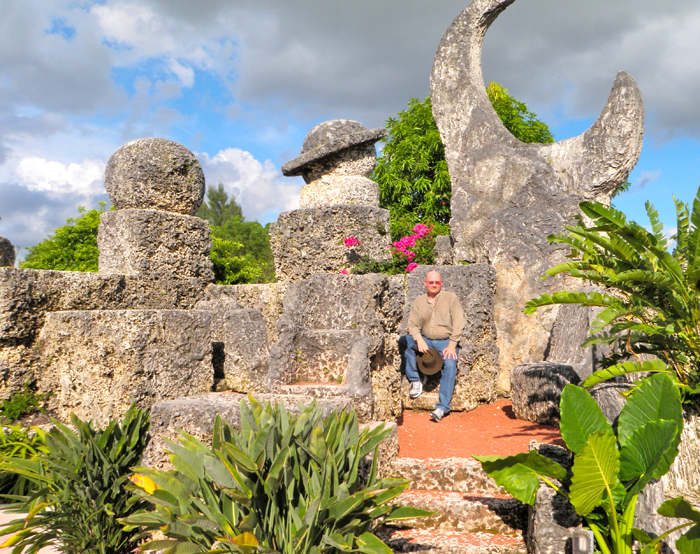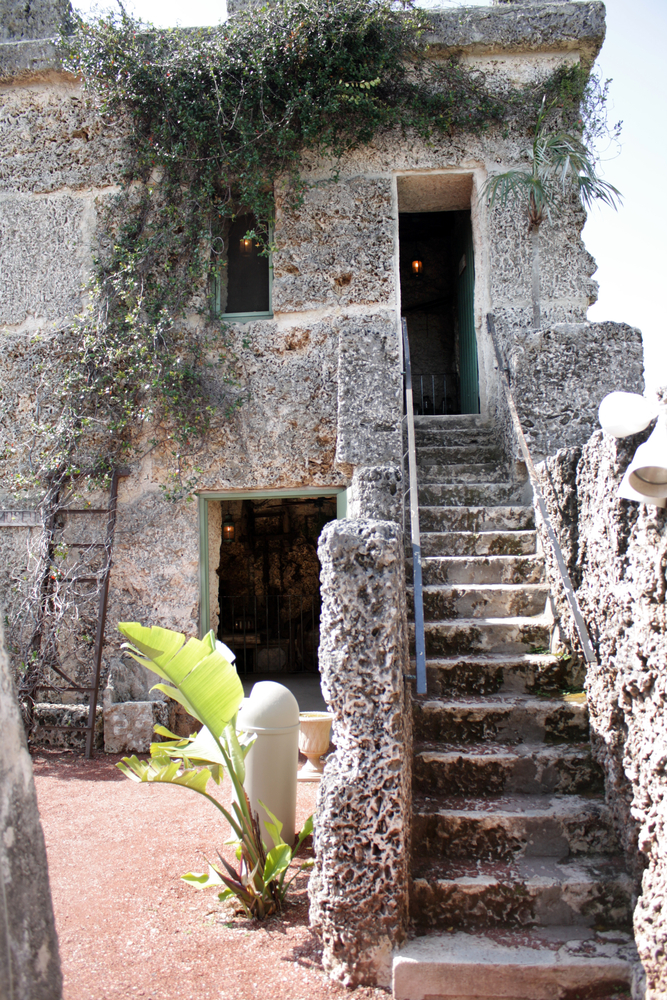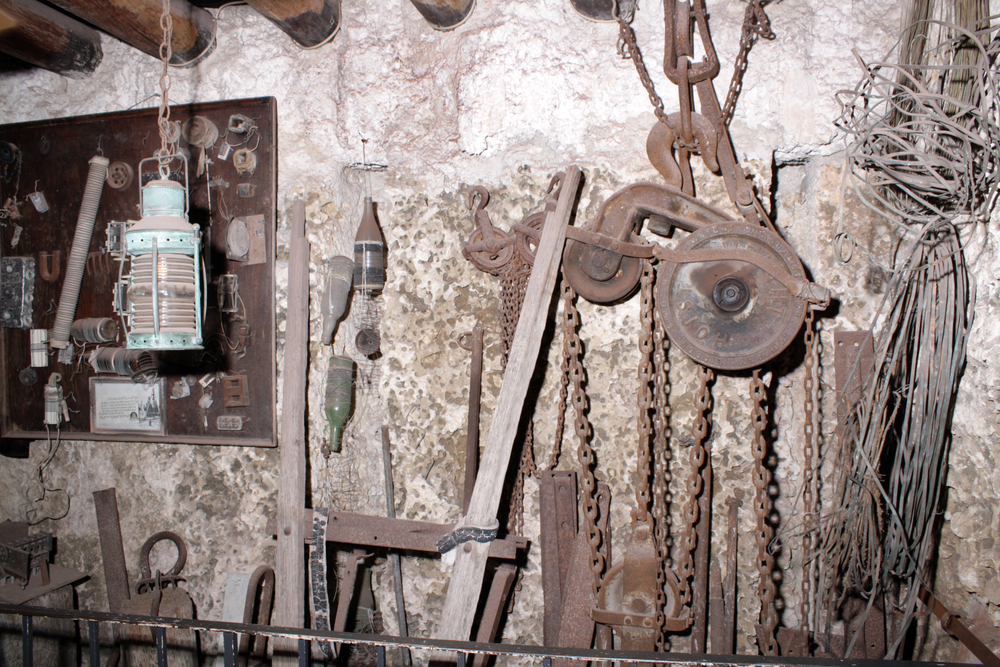Mystery of the Coral Castle Explained

In Homestead, Fla., not far from Miami and off the South Dixie Highway, sits a world-famous structure called the Coral Castle. Though not really a castle — and not really made of coral — it is nonetheless an amazing achievement. More than 1,000 tons of the sedimentary rock (oolite limestone) was quarried and sculpted into a variety of shapes, including slab walls, tables, chairs, a crescent moon, a water fountain and a sundial.
"You are about to see an engineering marvel that has been compared with Stonehenge and the Great Pyramids of Egypt," touts an information sheet available at the site. Many sources claim that the castle, originally called Rock Gate Park, is scientifically inexplicable. According to the attraction's website, "Coral Castle has baffled scientists, engineers and scholars since its opening in 1923." It has appeared countless times in books, magazines, and television shows. Rock musician Billy Idol even wrote a hit song about the place, "Sweet Sixteen." The park is listed on the National Register of Historic Places.
For decades, the park featured a perfectly balanced stone gate that, despite its weight, would easily swing open with a strong breeze or the push of a finger. How it worked remained a mystery until 1986 when it stopped moving. When the gate was removed it was revealed that it rotated on a metal shaft and rested on a truck bearing.
As strange and amazing as the site is, its history is equally improbable. It was created by just one man working alone for 28 years until his death in 1951. He was a Latvian immigrant named Edward Leedskalnin who stood, it is said, 5 feet tall (1.5 meters) and weighed 100 lbs. (45 kilograms). Legend has it that he was inspired to build the structure after being abandoned by his 16-year-old sweetheart on what was to be their wedding day. Spurned by his lost love, he set out to prove to her — and the world — that he could do something remarkable, and make something of himself despite his poverty and fourth-grade education. And he succeeded spectacularly.

Philosopher of stone
Though Leedskalnin was a private person, he opened the park in 1923 as a tourist attraction and would often greet visitors to personally show them his handiwork. Leedskalnin was not only a hard worker but also a self-styled philosopher (and a bit of a crank) who issued a series of pamphlets about his personal views on political, social, and domestic issues. One moralizing booklet optimistically titled "A Book in Every Home" complained, "The schools and the churches are cheapening the girls! They are arranging picnics — are coupling up the girls with the fresh boys — and then they send them out to the woods, parks, beaches, and other places so that they can practice in first-degree love making."
Leedskalnin also opined that the unemployed and powerless should not have voting rights: "It is not sound to allow the weaklings to vote. Any one who is too weak to make his own living is not strong enough to vote, because their weak influence weakens the state...." He was clearly a man of strong will and convictions who prized self-sufficiency and a rigid work ethic.

Creating the castle
Many stories and wild theories emerged over the decades about Leedskalnin and how he built his castle. Some say he levitated the blocks with psychic powers, or by singing to the stones. Others suggest Leedskalnin had arcane knowledge of magnetism and so-called "earth energies."
As tempting as it is to view the amazing park through a veil of mystery, in fact we know how the castle was built. Creating a structure like the Coral Castle today could probably be accomplished in a few months with a construction crew and modern machinery. But Leedskalnin worked alone using basic tools like picks, winches, ropes and pulleys. Leedskalnin himself said that that he did it using hard work and the principles of leverage. The tools he used to quarry the rock are on display at the Coral Castle, and several old photos depict the large tripods, pulleys, and winches he used to move the blocks. Though the quarried stone slabs are large, they are actually lighter than they appear because the rock is porous.
Remarkably, when he heard that a subdivision was being planned near his home, he bought land 10 miles away. Over the next three years, he moved the structures he had already begun from Florida City to Homestead, according to the museum's website.
Though Leedskalnin worked alone, he was not a reclusive hermit; he had friends who he saw often. One man, Orval Irwin, was not only a long-time friend of Leedskalnin's but also a building contractor with a deep knowledge of construction techniques. Irwin wrote a 1996 book with the inspiring title "Mr. Can't Is Dead! The Story of the Coral Castle," and in it he explains, through photographs, drawings, and schematics, how it was done.
Irwin pours cold water on the paranormal theories that unknown energies, alien technology, or levitation built the castle. In fact, he finds such theories an insult to the hard work and integrity of his friend: "Back in the days when Ed started carving out his original stones," Irwin writes, "his was a generation who knew accomplishments by the sweat of the brow. It wasn't mysticism but hard work, this is how Ed really accomplished the massive project...."
Visiting the castle
The Coral Castle Museum is open to visitors seven days a week (9 a.m. to 6 p.m., Sunday through Thursday; 9 a.m. to 7 p.m., Friday and Saturday). Adult admission is $18. The castle can also be rented for weddings, receptions and parties.
Sign up for the Live Science daily newsletter now
Get the world’s most fascinating discoveries delivered straight to your inbox.











